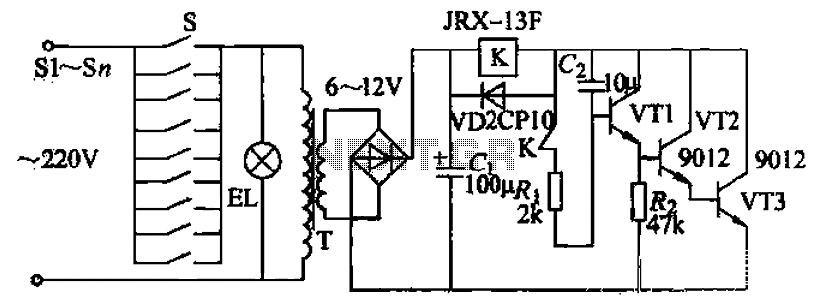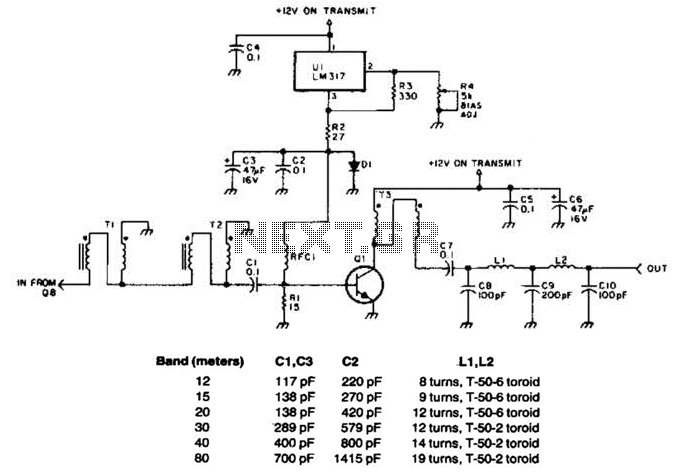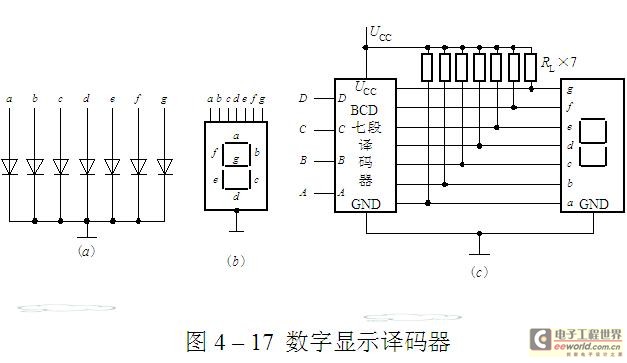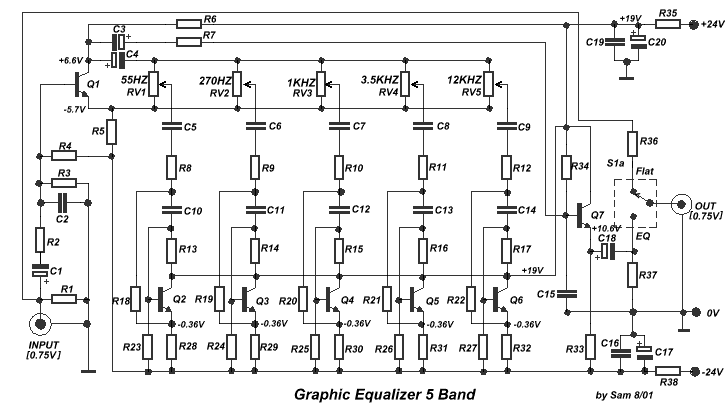
555 point-frequency TV terminal circuit
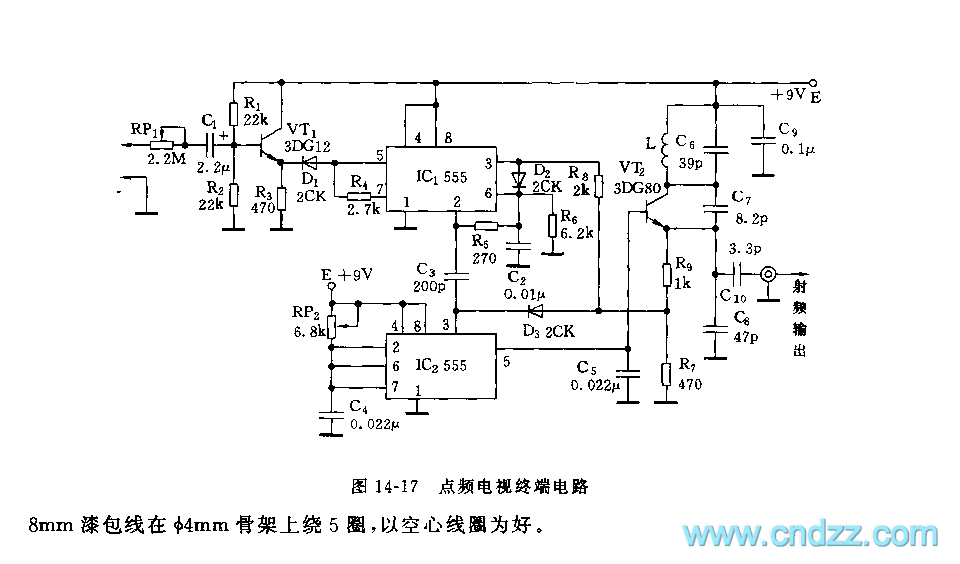
As shown in figure 14-17, this circuit consists of the input circuit, the line frequency synchronization generator, the sample-and-hold circuit, the voltage control delay generator, and the RF modulator. The input circuit includes the input attenuator RP1 and the emitter follower VT1. The astable multivibrator is formed by IC2 and RP2.
This circuit is designed to process signals for various applications, particularly in communication systems. The input circuit serves as the initial stage for signal conditioning, where the input attenuator RP1 adjusts the signal level to a suitable range for further processing. The emitter follower VT1 acts as a buffer, providing high input impedance and low output impedance, ensuring minimal loading on the preceding stage while driving subsequent components effectively.
The line frequency synchronization generator is crucial for maintaining timing accuracy within the system. It generates a stable reference frequency that is used to synchronize the operation of the other circuit elements. This synchronization is essential for ensuring that the sample-and-hold circuit accurately captures the input signal at the correct times, thereby enhancing the fidelity of the processed output.
The sample-and-hold circuit temporarily holds the sampled signal, allowing for stable processing and conversion. This stage is vital in applications where the signal needs to be digitized or modulated, as it ensures that variations in the input signal do not affect the output performance.
The voltage control delay generator introduces a delay in the signal path, which can be adjusted based on the control voltage. This feature is beneficial for phase modulation and other applications where precise timing is essential. The RF modulator at the output stage converts the processed signal into a radio frequency signal suitable for transmission.
Overall, the integration of these components allows for a versatile and efficient circuit capable of handling various signal processing tasks, making it a valuable design in modern electronic systems.As the figure 14-17 shows, this circuit is composed of the input circuit, the line frequency synchronization generator, the sample-and-hold circuit, the voltage control delay generator and the RF modulator.The input circuit is composed of the input attenuator RP1 and the emitter follower VT1. The astable multivibrator is composed of the IC2 and RP2,.. 🔗 External reference
This circuit is designed to process signals for various applications, particularly in communication systems. The input circuit serves as the initial stage for signal conditioning, where the input attenuator RP1 adjusts the signal level to a suitable range for further processing. The emitter follower VT1 acts as a buffer, providing high input impedance and low output impedance, ensuring minimal loading on the preceding stage while driving subsequent components effectively.
The line frequency synchronization generator is crucial for maintaining timing accuracy within the system. It generates a stable reference frequency that is used to synchronize the operation of the other circuit elements. This synchronization is essential for ensuring that the sample-and-hold circuit accurately captures the input signal at the correct times, thereby enhancing the fidelity of the processed output.
The sample-and-hold circuit temporarily holds the sampled signal, allowing for stable processing and conversion. This stage is vital in applications where the signal needs to be digitized or modulated, as it ensures that variations in the input signal do not affect the output performance.
The voltage control delay generator introduces a delay in the signal path, which can be adjusted based on the control voltage. This feature is beneficial for phase modulation and other applications where precise timing is essential. The RF modulator at the output stage converts the processed signal into a radio frequency signal suitable for transmission.
Overall, the integration of these components allows for a versatile and efficient circuit capable of handling various signal processing tasks, making it a valuable design in modern electronic systems.As the figure 14-17 shows, this circuit is composed of the input circuit, the line frequency synchronization generator, the sample-and-hold circuit, the voltage control delay generator and the RF modulator.The input circuit is composed of the input attenuator RP1 and the emitter follower VT1. The astable multivibrator is composed of the IC2 and RP2,.. 🔗 External reference
